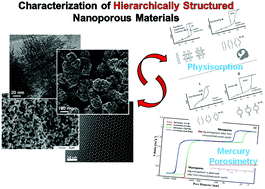Recent advances in the textural characterization of hierarchically structured nanoporous materials
Abstract
This review focuses on important aspects of applying physisorption for the pore structural characterization of hierarchical materials such as mesoporous zeolites. During the last decades major advances in understanding the adsorption and phase behavior of fluids confined in ordered nanoporous materials have been made, which led to major progress in the physisorption characterization methodology (summarized in the 2015 IUPAC report on physisorption characterization). Here we discuss progress and challenges for the physisorption characterization of nanoporous solids exhibiting various levels of porosity from micro- to macropores. While physisorption allows one to assess micro- and mesopores, a widely employed method for textural analysis of macroporous materials is mercury porosimetry and we also review important insights associated with the underlying mechanisms governing mercury intrusion/extrusion experiments. Hence, although the main focus of this review is on physical adsorption, we strongly emphasize the importance of combining advanced physical adsorption with other complementary experimental techniques for obtaining a reliable and comprehensive understanding of the texture of hierarchically structured materials.

- This article is part of the themed collection: Hierarchically-structured porous materials: from basic understanding to applications

 Please wait while we load your content...
Please wait while we load your content...